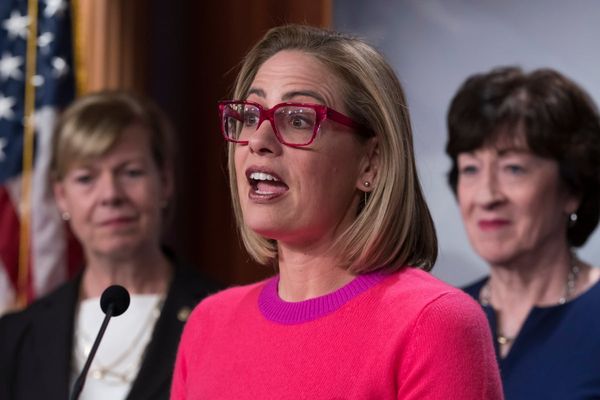The clinical director of Our Lady’s Hospital, Navan has said that critically ill patients in Co Meath “are not provided with the best opportunity of survival” at the hospital.
Controversy has rumbled over the future of Our Lady’s Hospital after the HSE announced on Monday the final phase for the Co Meath hospital becoming a “model 2” facility.
This will mean the intensive care unit and small emergency department will be closed and a 24/7 medical assessment unit will open instead, which the HSE says will still see around 80% of the 25-30 patients it currently sees daily. The hospital will also have a local injuries unit as part of this change.
Read More: Navan’s Emergency Department transitioning to a 24-hour Medical Assessment Unit
Politicians have been raising concerns about what effect the “downgrading” will have on patient access to emergency care in the area, and about what knock-on effects it will have on capacity at Our Lady of Lourdes in Drogheda.
On Tuesday, the Minister for Health Stephen Donnelly released a statement saying “no decision regarding the HSE’s proposal for the transition of the emergency department at Our Lady’s Hospital Navan (OLHN) has been agreed by this government”.
In a Facebook post on Tuesday, Minister for Justice and Meath East TD Helen McEntee said the HSE had not addressed “serious questions around capacity”, adding that she was opposed to the original HSE plan.
“Any proposals which would mean people in Meath having to attend emergency services outside the county which would not be adequately resourced to meet increased demand are unacceptable,” she said.
On Thursday, Gerry McEntee, clinical director of Our Lady’s Hospital, Navan, stressed the risk for critically ill people who attend the Navan hospital.
“I don’t know if the public really realise, but this cohort of critically ill patients who by virtue of the fact of coming into Our Lady’s Hospital, Navan, are not provided with the best opportunity of survival,” he told the News At One radio programme.
“In every other county in the country, as things stand at present, these critically ill patients are brought by ambulance or by family to the nearest level 3 or 4 hospital that has the essential critical care services to provide those patients with the best opportunity of survival, and the people of Co Meath who are unfortunate enough to be critically ill, cannot say that.”
When asked whether it was safe for the emergency department to continue as it is, Mr McEntee said “it is absolutely not safe”.
“Junior hospital doctors, all of them, have expressed their concerns about health and safety in Navan and have written and put it in writing and those letters are sitting on Minister Donnelly’s desk.”
When asked about the concern of politicians, Mr McEntee responded: “They may not agree with me, but if you think about this: the nurses, the physicians, the surgeons, the anaesthetists, myself, the clinical director, the management of Our Lady’s Hospital, Navan, the management of Ireland East and the HSE, who deal with medical issues day-in day-out, are being told by politicians who have no experience of medicine that we are incorrect because we are saying Navan is unsafe.
“Now, which of those two do you think we should believe?”
At an Oireachtas Health Committee appearance on Wednesday, HSE’s chief operations officer Anne O’Connor indicated that it would be difficult to upgrade Navan to a model-three hospital given the limited capacity and services it currently has.
“The reality is Navan hospital has 62 medical beds, any other model-three, model-four hospital has a minimum of 200/250. It is not an option to build that up.”
She said that despite Meath becoming more populated in recent years, specialities that do not exist in Navan, such as interventional cardiology, interventional radiology, neurology, emergency surgery, infectious diseases and nephrology, create challenges in adequately equipping the Navan hospital.
“The hospital is not accredited for training from any of the colleges, so it’s not an option to put trainees in there. So the reality is in healthcare, unfortunately, it’s not sustainable or safe to try and provide every service everywhere.”
Ms O’Connor said that there had been “very significant investment in Navan” in recent years, including additional theatre beds and radiology services.
“In Our Lady of Lourdes, we’ve put in 84 beds in recognition of the need coming from Navan. So 40 of those beds are to compensate for the growing activity in the Drogheda area, 44 were to compensate for the reduction in admissions to Navan.”
HSE chief Paul Reid told the committee “we will continue to invest in Navan hospital”, but he has to listen to the concerns raised by senior clinical specialists in the area.
“I, in my role as CEO of the HSE, have to take those risks very seriously,” Mr Reid said.
“I take any risks associated with patient safety and saving patients’ lives very seriously. So I can’t ignore that, I have to address it.
“Obviously, I take full cognisance of the Government’s concerns, and we will address Government concerns,” he said. “But I won’t walk away from what has to be done here.”
Get breaking news to your inbox by signing up to our newsletter







